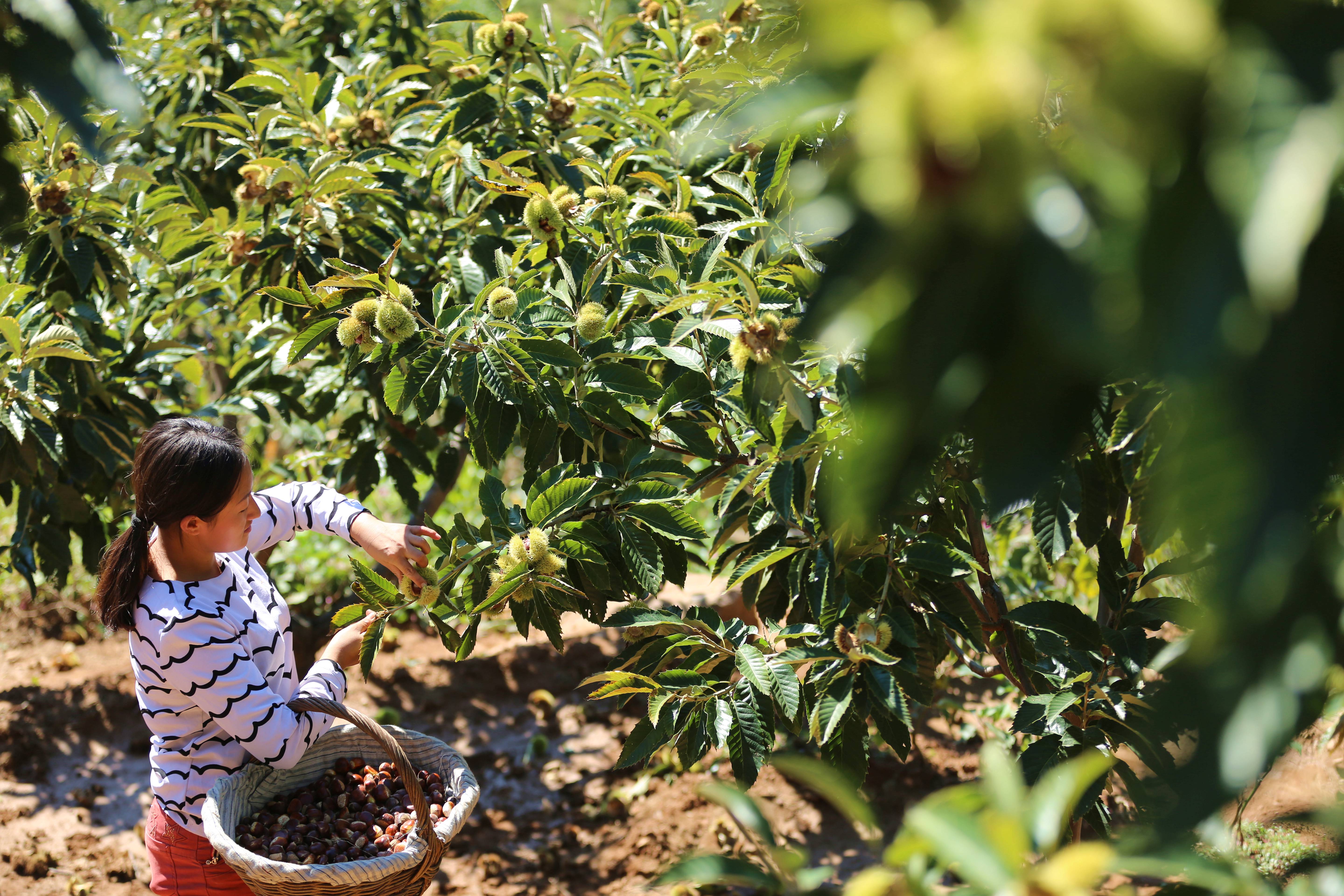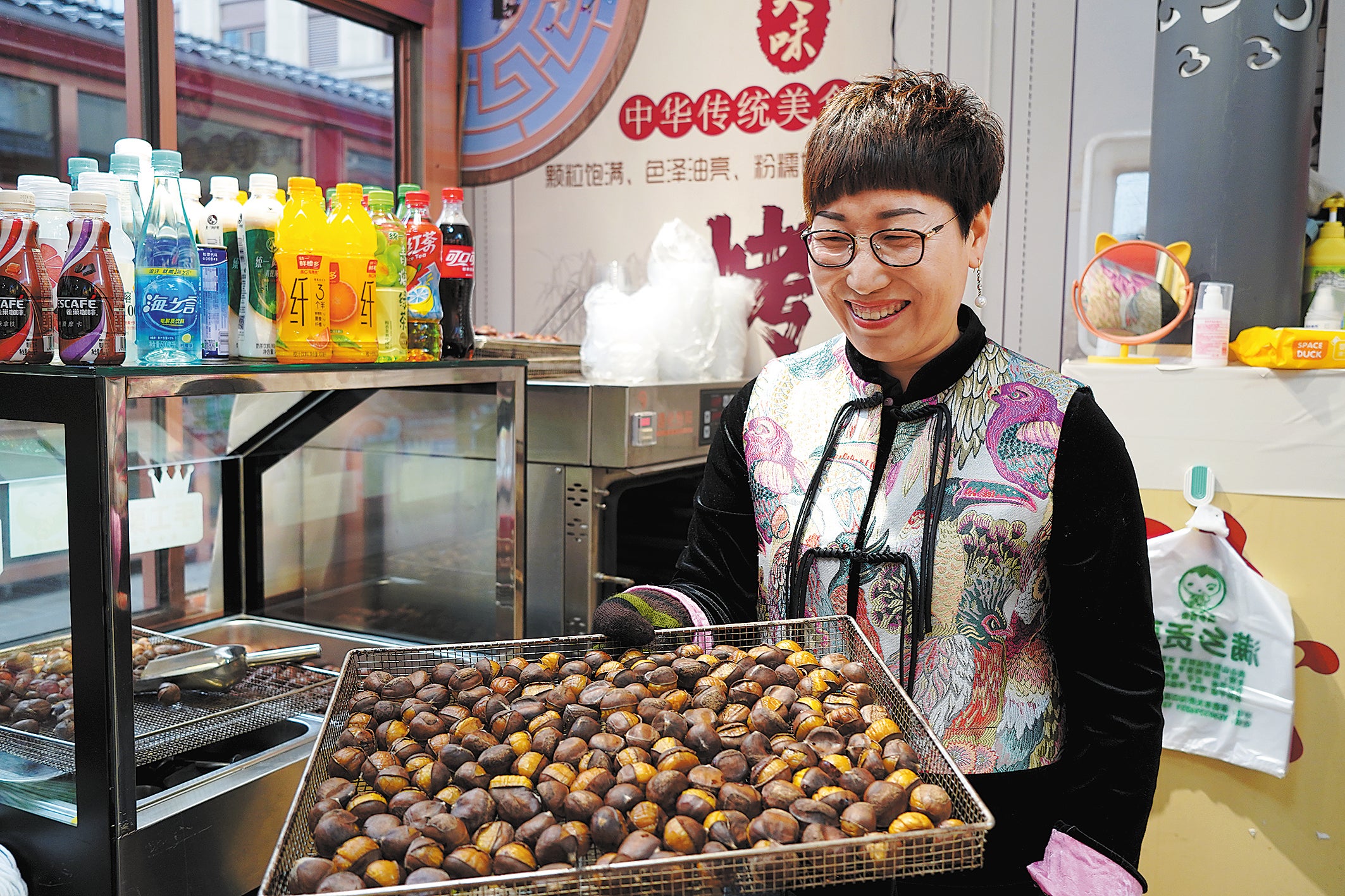Rooted in sustainability
THE ARTICLES ON THESE PAGES ARE PRODUCED BY CHINA DAILY, WHICH TAKES SOLE RESPONSIBILITY FOR THE CONTENTS

Farmer Liu Jingyi would play at the family chestnut tree just outside their yard when he was a child, climbing up its branches and into the hollow of its trunk.
“It was a big tree, the trunk about 3.3 feet wide, probably more than 600 years old and very much a part of our lives,” said Liu, now 79.
Liu is a fifth-generation cultivator of chestnut trees in Aiyukou village of the Kuancheng Manchu autonomous county in Chengde, North China’s Hebei province.
The village is a centre of chestnut cultivation. More than 400 Aiyukou households covering nearly 2.7 square miles of farmland yield about 1,000 metric tonnes of the nuts a year, with many of the trees hundreds of years old. About 193 square miles in Kuancheng are used to farm chestnuts, with an annual output value of 860 million yuan (£93.3 million), according to the latest industry figures.
Local residents are justifiably proud of their sweet and plump chestnuts, grown with tried and tested farming practices stretching back to the Han Dynasty (206 BC-220). Two iconic Kuancheng chestnut trees, which forestry specialists said were planted in the year 1303, still bear fruit.
The county is now poised to tap the latest green development trends following a global nod to its model of sustainability. In November, the United Nations Food and Agriculture Organisation included the Kuancheng Traditional Chestnut Eco-Planting System on its list of Globally Important Agricultural Heritage Systems, citing its rich cultural content that embodies “the ecological view of respecting nature and the social organisation form that promotes agricultural production”.
Since 2005, the organisation has designated at least 86 systems in 26 countries as agricultural heritage sites under its programme. China ranked first in the world in the number of the heritage systems by 2023, with its total of 22 entries.

“Kuancheng chestnut forests are distributed on the foothills and the lower parts of hillsides, existing in harmony with the local flora and fauna and setting an important example for the development of ecoagriculture in a mountainous, semiarid area with limited resources,” said Shang Heli, economic crops director at Kuancheng’s agriculture and rural affairs bureau.
“Evolved from ancient times, chestnut cultivation here encompasses rationally allocated soil terraces, customised irrigation pits and channels, natural fertilisation and pest control, and complementary crops such as mushrooms and grain, as well as free-ranging poultry, grown and bred under the trees that altogether offer a closedloop, comprehensive, efficient and ecological farming tradition passed down generations,” he said.
“Behind this harmonious symbiosis between chestnut cultivation and the natural environment is a flexible smallholder farming and cooperatives network that constitutes a stable and highly adaptable social and economic operation mode,” said Shang, who was closely involved in the county’s application for inclusion on the UN heritage list.
Kuancheng’s ecological view of respecting nature and the social organisation that supports agricultural production in turn reflect its rich cultural connotations, according to the UN.
“A code of conduct for protecting the natural environment and promoting the harmonious coexistence between humans and nature has been gradually established by the local community, with aspects such as clothing, dwellings, festivals and ceremonies showing people’s respect for and adaptation to their physical environment,” it said.
Kuancheng residents like 40-year-old entrepreneur Liu Jianxia are looking to their roots to ride the latest developments, promoting Kuancheng’s chestnuts at home and abroad.
Her three shops, two in the city centre and one in the county, selling chestnuts and other food products, help rake in more than 2 million yuan (£217,000) a year.
Other than focusing on e-commerce trends such as livestreaming, Liu’s investments in innovative practices include modern food processing equipment and attractive product packaging to keep up to speed with evolving consumer tastes.
“I received a lot of local support, such as government financial aid, for my education all the way up to the tertiary level, where I majored in business management,” she said.
“We’ve reaped a lot from our chestnuts, which are deeply embedded in our history, culture and way of life. It seems only natural to share the rich bounty of our home with everyone.”

Bookmark popover
Removed from bookmarks